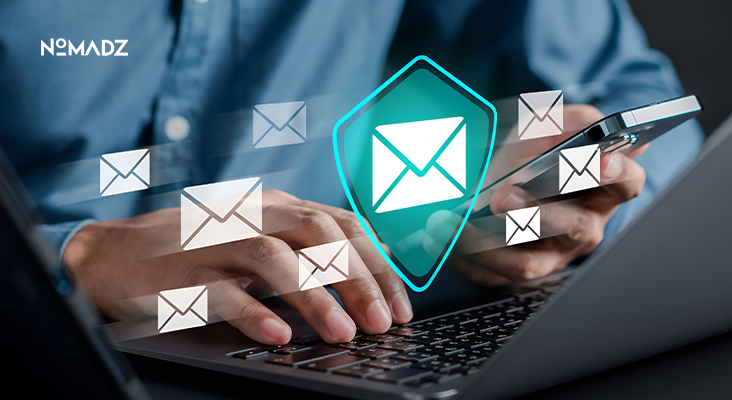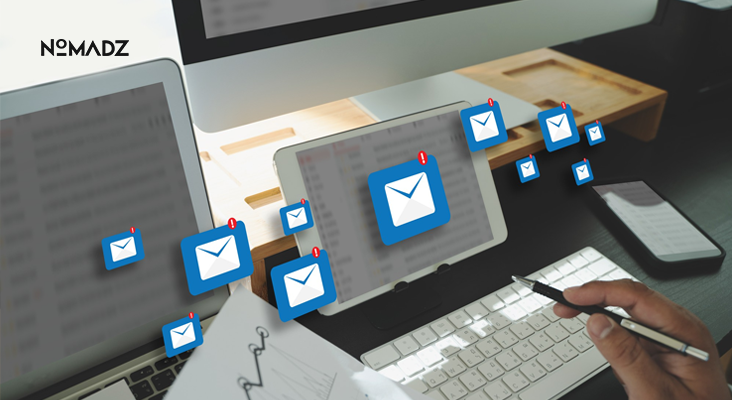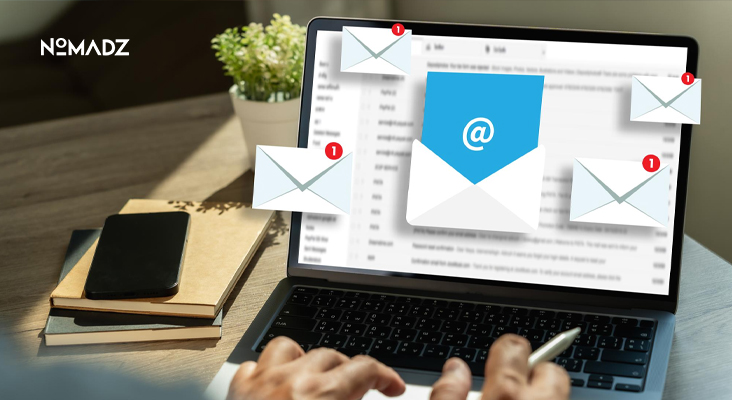Email Authentication Guide for SPF, DKIM, and DMARC in 2025
Email delivers nearly 300 billion messages daily, but 45% of companies report phishing attacks slipping past their filters, a costly amount of spam, reputation damage and lost trust. That’s why email authentication is more important now than ever. In this blog, I’ll show you how to verify emails with SPF, DKIM, and DMARC.
This will help ensure that they arrive safely in inboxes. We’ll go over mail DKIM, SPF DKIM alignment, DMARC test methodologies and how to validate SPF and DKIM; no fluff, just practical procedures. Learn how to authenticate your email without confusion and fortify sending domains in 2025.
| Component | Purpose | Typical TTL |
| SPF Record | Declares permitted sending servers | 3600 – 86400s |
| DKIM Key | Signs for outbound emails | 86400s |
| DMARC Policy | Governs domain protection | 86400s |
Why Unauthenticated Domains Are a Security Risk You Can’t Ignore?
Unprotected domains are a magnet for spammers. Consider sending a well-crafted notification, which your customer gets, but then a phishing email pretending to be from your address appears seconds later. Mail servers cannot distinguish between a valid message and a fake if SPF or DKIM are not enabled.
That’s a domain reputation disaster. Now, picture you’ve set up SPF, but a misconfiguration occurs. Maybe your service provider’s MX isn’t included. The record fails check email authentication testing, and recipients see “via mailgun.com” or get flagged outright. That’s embarrassing and costly.
Or you can implement authentication, but your selector doesn’t match or the private key’s wrong. My last audit for a startup found 30% of outbound emails failed DKIM. Laeds flooded back undelivered. Many mistakenly think DKIM alone suffices. But DKIM only confirms the signature, not the domain’s policy.
Without a DMARC policy aligned with both SPF and DKIM, you leave a gap. That’s why performing a proper DMARC test is significant. I’ve watched clients launch DMARC in “none” mode for weeks, gather data, then shift to “reject” confidently without losing deliverability.
Those who skip analysis find important sources missing or misfiring and end up in compliance chaos. Let me show you exactly how to authenticate emails step by step, avoiding messy record conflicts or failure loops. It all starts with setting up the SPF record and authentication.
Then, you move through testing DKIM and finish by verifying SPF and DKIM checks, along with DMARC enforcement. You’ll rarely see a problem once all the prices align if you do it right.
How to Set Up SPF, DKIM and DMARC the Correct Way?
For email authentication to work, it first needs to be correctly set up from a technical standpoint. Start very small, test rigorously and monitor at all times. As your stages grow more mature, you will see a decrease in spoofing, so that you will start to see growing open rates and engagement.
Email authentication is not only effective in putting a checkmark on the open rates and engagement. For protection of your domain and guaranteed delivery, the SPF records must be set, DKIM signing enabled, and the valid DMARC policy implemented.
1. Set Up the SPF Record
To begin with the email authentication, list all of the platforms and services that send email on behalf of your domain. This usually comprises your primary email provider, email marketing and transactional email services. After listing these sources, add an SPF record to your domain’s DNS settings.
This record lets recipient servers know which IPs are authorized to send mail from your domain. The setup must be accurate and limited to verified senders only. An incomplete SPF setup may cause legitimate messages to fail delivery, while an overly broad record can open the door to spoofing.
2. DKIM Authentication (Mail DKIM and SPF DKIM Alignment)
DKIM authentication accomplishes this by attaching a cryptographic signature to sent emails. After which, the receiving Mail Server verifies the signature with the help of your Public Key in your DNS. If the signature turns out to be valid, then the message is taken to be trustworthy.
For it to be properly aligned for DMARC, the domain specified in the DKIM signature must be the same as that contained in the “From” header of the email. This alignment is known as SPF DKIM alignment and is the core of any passing DMARC check.
When DKIM in the mail is not configured in the right manner, messages can fail despite seeming to be from the correct source.
3. SPF and DKIM Checking
After having SPF and DKIM set up, the administration should verify their proper functioning. Send a few emails to test accounts and check out the email headers for both the test and to qualify. The test accounts should be aligned with the sending domain because not being compatible generally means decreased deliverability.
It is a good practice to have frequent verification checks of your SPF and DKIM to avoid blocked messages via DNS failure, expired keys or a misconfiguration that taints sender reputation.
4. DMARC Test
DMARC is the policy domain that instructs receiving servers to treat failed messages from SPF or DKIM. Begin with a relaxed policy mode that will monitor and report failures, but not interrupt delivery, so you can gather information without dropping messages.
Later, review these reports and determine all the sources that should be authorized. Then, change the policy to a harder mode. It would be worth understanding DMARC vs DKIM. DKIM makes sure that the message was not tampered with en route and verifies the identity of the sender, but DMARC has policy and reporting.
Therefore, a DMARC check sees that SPF and DKIM are passing and aligned before they were enforced.
5. Continually Monitor the Health of Email Authentication
Email-based authentication is never really a one-time setup that you do and leave it at that. Variations in your email infrastructure, introduction of new applications or updates from a third-party vendor can affect your configuration. Keep monitoring authentication results using DMARC reports and testing tools.
These help you spot misalignment or failed email authentication quickly and fix it before it disrupts delivery. Consistent checks ensure you maintain strong protections and reliable performance.
6. Domain Authentication Best Practices
Maintaining domain authentication means applying strategic and security-focused habits. Always use strong DKIM keys and rotate them periodically. Keep your SPF record lean and accurate by removing any unused senders. Avoid relaxed SPF configurations unless necessary. For DKIM, use unique selectors per provider and avoid reusing keys.
When implementing DMARC, move slowly from monitoring to enforcement and never skip the analysis phase. Log changes; keep a record of them; double-check everything with test messages; and make authentication a part of your domain security concept.
Conclusion: Is Email Authentication Worth It?
These days, protecting your email infrastructure cannot be an option. If you fail to set up email authentication, you open yourself to delivery failures, phishing campaigns and long-term destruction of the reputation of your domain. SPF, DKIM and DMARC work together to instil receiving servers’ confidence and push your email to the correct inbox.
Email authentication is not only effective to put a checkmark on the compliance list; it is a direct investment in your brand’s credibility and communications. Set them properly, take your time, and your email performance will attest to the effort.
FAQs
Q. What types of email authentication are there?
There are 3 types of authentication. They are – SPF, DKIM, and DMARC, where SPF comes down to validating sending IPs, DKIM authenticates messages, and DMARC binds both under a domain policy.
Q. How do I authenticate my email?
Begin by creating the SPF record enumerating approved senders, allowing the authentication using a legitimate selector and DNS key and then implementing a DMARC policy to ensure alignment.
Q. What is an email authentication technique?
Like SPF, DKIM or DMARC, it is a method used to authenticate an email sender to ensure that the mail is original and approved by the domain owner.
Q. What does DKIM do for email?
DKIM puts a digital signature on the email so that the recipient’s mail server can check SPF/DKIM alignment. This helps verify the mail has not been tampered with and authenticates the sending domains.
Q. How do I fix email authentication failed?
Determine if SPF or DKIM failed: modify your DNS records, check the right keys and servers are included, then resend a test email DKIM or SPF check to verify the correction.









Leave feedback about this